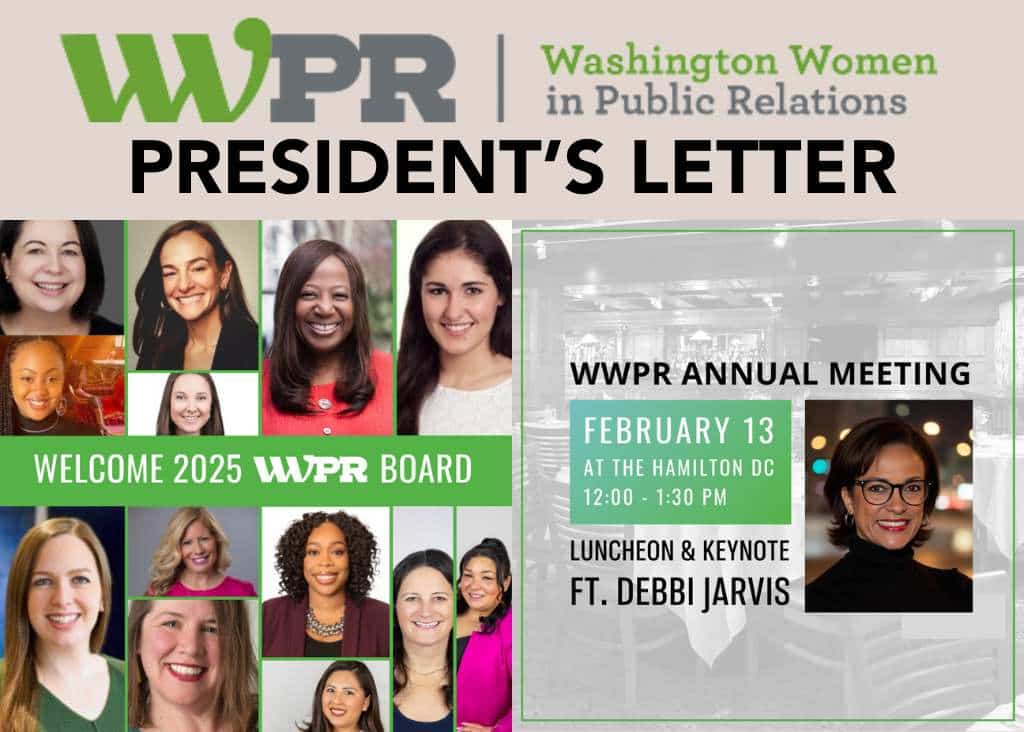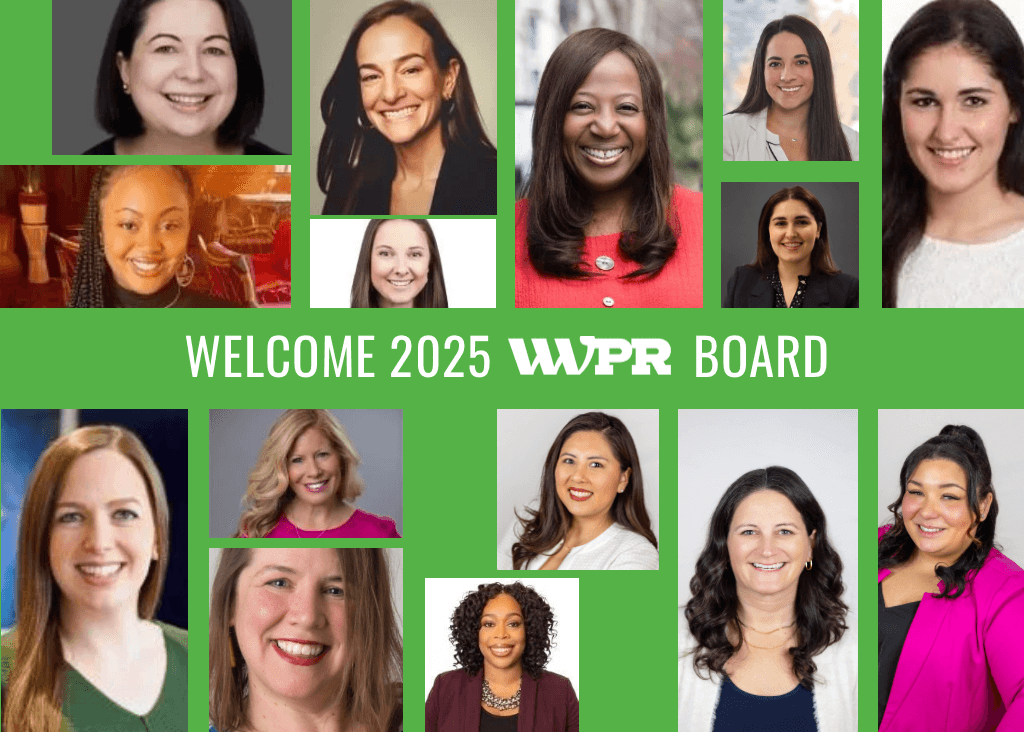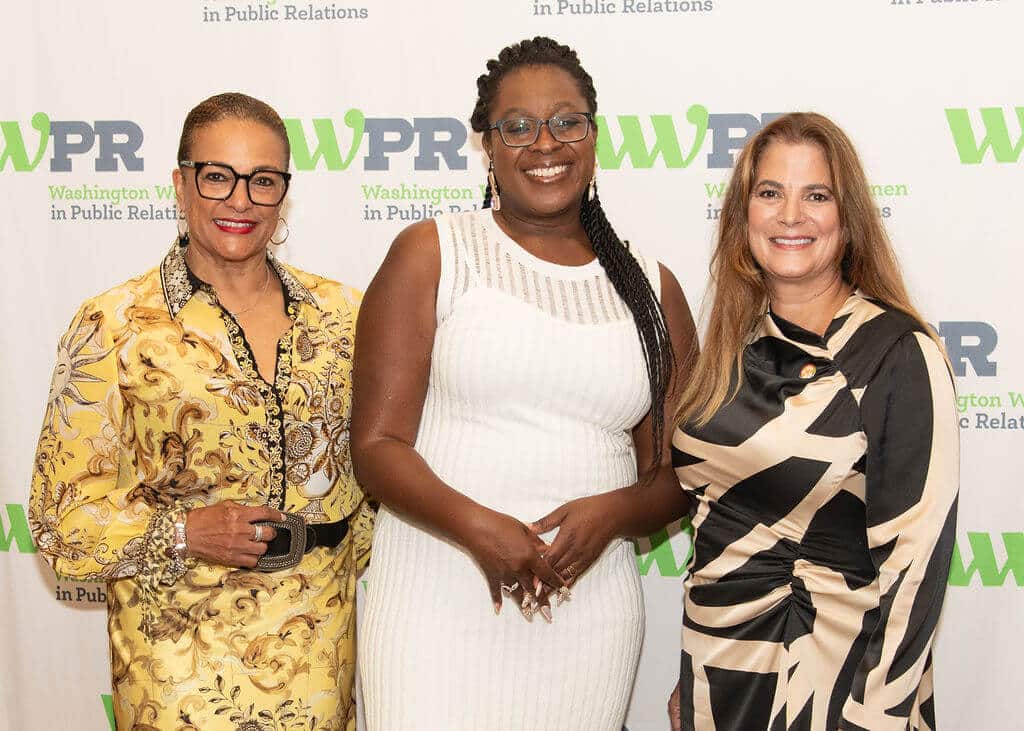WASHINGTON, D.C. (June 20, 2024) — On June 18, Washington Women in Public Relations (WWPR), a professional society for female communicators in the greater capital area, named its 2024 class of Emerging Leaders Awards (ELAs). The seven winners were selected from a diverse and impressive slate of rising stars, ages 25-35, who have excelled in public relations and related fields, and given back to the industry by contributing their skills and talents to innovative initiatives and projects.
“We continue to celebrate the remarkable achievements of young women who represent the next era of communications,” said Chelsea Echavarria, President of WWPR. “Congratulations to the finalists and the honorees who were selected from another record number of nominations. We look forward to following their careers and supporting them along the way.”
The 2024 WWPR Emerging Leaders Awards Winners are:
Corporate: Michelle Byamugisha, Senior Manager, Communications, PwC
Michelle Byamugisha is a leader with global experience in public relations and stakeholder engagement across multiple sectors. Currently, Michelle is a senior manager on PwC’s communications team, with a focus on people communications and public affairs. When she’s not coordinating internal employee engagement campaigns to a 75,000+ strong workforce or managing owned/earned content strategies, Michelle is engaged in social inclusion efforts both inside and outside the office.
Prior to PwC, Michelle was on the social impact team at Weber Shandwick where she helped purpose-driven clients tell their stories through an audience-centric approach to thought leadership. In Weber’s DC office, Michelle served as chairperson of the Diversity, Equity and Inclusion Committee and was also recognized as the 2020 employee of the year.
Trade Association: Jen Bristol, Senior Director of Communications, Solar Energy Industries Association
Jen Bristol is a strategic communications expert who has dedicated her career to supporting the U.S. solar and storage industry.
Currently, Jen leads the communications team at the Solar Energy Industries Association (SEIA), where she supervises a team of communications professionals and orchestrates public affairs campaigns and announcements designed to expand the U.S. solar market.
Prior to joining SEIA, Jen was the deputy communications lead at the U.S. Department of Energy Solar Energy Technologies Office, where she provided communications support and led the office’s awardee engagement efforts, editorial calendar, web presence, and special communications projects and events.
Non-Profit: Valeria Sabaté, Senior Media and Public Affairs Manager, American Association for the Advancement of Science (AAAS)
Valeria Sabaté is the Sr. Media & Public Affairs Manager at the American Association for the Advancement of Science (AAAS). She drives organization-wide media and public affairs engagement, elevating AAAS’ leadership/policy positions and news at the nexus between science and society while protecting its reputation through risk assessment and crisis communications preparedness.
Valeria has many years of experience in media relations, public relations and crisis communications in health care, public health, publishing and science associations.
Before joining AAAS, Valeria was the Sr. Communications Specialist, Research & Innovation at the Children’s National Hospital (CNH).
Small/Boutique Agency: Erin Berst, Vice President, CURA Strategies
Erin Berst serves as a vice president at CURA Strategies, where she develops and manages integrated communications campaigns for organizations that span the healthcare industry.
From helping patients address the emotional grief of cancer with new interventions to educating urologists on the latest precision medicine tools, Erin keeps the purpose of her work front and center: helping people live stronger, better, healthier lives. Although Erin is experienced across communications disciplines, she is particularly passionate about writing and has earned a reputation for being tenacious about securing media coverage for her clients.
Erin regularly provides strategic counsel and daily coordination for her clients and is known for her cheerfully persistent approach to project management. Recently, Erin led a collaborative effort to create Mobilize Recovery Day of Service, a campaign to help break down stigmas around recovery during National Recovery Month.
Mid-Size Agency: Jenny Wang, Senior Vice President, Susan Davis International
Jenny Wang is an agile and dynamic communications expert who has helped companies and organizations in the healthcare, technology, nonprofit and energy sectors gain greater recognition in the media, bolster thought leadership, navigate DE&I issues, and mitigate crises. With more than a decade of experience in strategic communications, she is a recognized leader in the PR industry (honored by PRWeek, PRNEWS, Ragan, and the Diversity Action Alliance).
Before joining SDI, Jenny was a Senior Vice President at CLYDE, where she worked with clients in the healthcare and DEI spaces, including leading and helping grow the firm’s largest account (driving patient advocacy and health equity for a Fortune 150 pharma company).
Large/Global Agency: McKenzie Wax, Vice President, Weber Shandwick
Captivated by trends and driven by numbers, McKenzie seamlessly marries brand messages with the pulse of today’s internet culture.
With over a decade of experience, McKenzie has driven social and influencer campaigns that make global brands pop in an oversaturated digital world. She’s a wizard at cultivating engaged online communities and turning casual scrollers into die-hard brand enthusiasts.
At Weber Shandwick’s Social Media, Emerging Platforms, and Influencer practice in Washington, DC, McKenzie guides a spectrum of clients—from Fortune 100 giants to fresh, emerging brands—through the maze of modern digital strategies. Her expertise spans paid and organic social media, employee advocacy, executive visibility, and integrated campaign planning, both for B2C and B2B.
Government: Jennifer Min, Director of Digital Media, U.S. Department of Defense
Jennifer Min currently serves as the Director of Digital Media for the Department of Defense, where she develops digital communication strategies for the DoD and coordinates messaging with the Armed Services and Combatant Commands. Previously, Jennifer served as the Special Assistant to the Assistant to the Secretary of Defense for Public Affairs. In this role, she assists the Pentagon Press Secretary and Deputy Press Secretary in their efforts to advise the Secretary of Defense on public communications. Prior to joining the Biden-Harris Administration, Jennifer was press secretary for retired U.S. Representative Brenda L. Lawrence (MI-14).
The 2024 judges included:
- Susan Apgood, 4media Group; WWPR Advisory Board Member
- Sukhi Sahni, Wells Fargo; WWPR Advisory Board Member
- Hillarie Turner, SpireCommunications; WWPR Advisory Board Member
- Elynsey Price, Marriott International; WWPR Past President
- Zorie Valchev, AstraZeneca; WWPR Past President
- Chelsea Echavarria, The Curley Company; WWPR President
- Colleen Gallagher, OnWrd & UpWrd; WWPR Vice-President
The ELA winners were announced at a special awards reception on The Wharf on June 18, 2024. Kirstin Garriss, award-winning journalist and Washington D.C. Correspondent for Cox Media Group gave the keynote. Attendees also supported WWPR’s pro bono client, Running Start. The complete list of 2023 WWPR Emerging Leaders Awards finalists can be found here: Washington Women in Public Relations Announces 2024 Emerging Leaders Finalists (wwpr.org).
###
Washington Women in Public Relations (WWPR) is a member-based professional society cultivating and inspiring female communicators to reach their full potential in the DC market and beyond. The organization is committed to providing leadership opportunities, professional development, mentorship, and industry networking. Visit us at wwpr.org connect with us on LinkedIn and Facebook, and follow us on Twitter @WWPR and on Instagram @WWPRDC.
CONTACT:
Ranata Reeder and Charmaine Riley
WWPR Emerging Leaders Awards Co-Chairs
ela@wwpr.org





